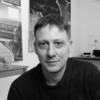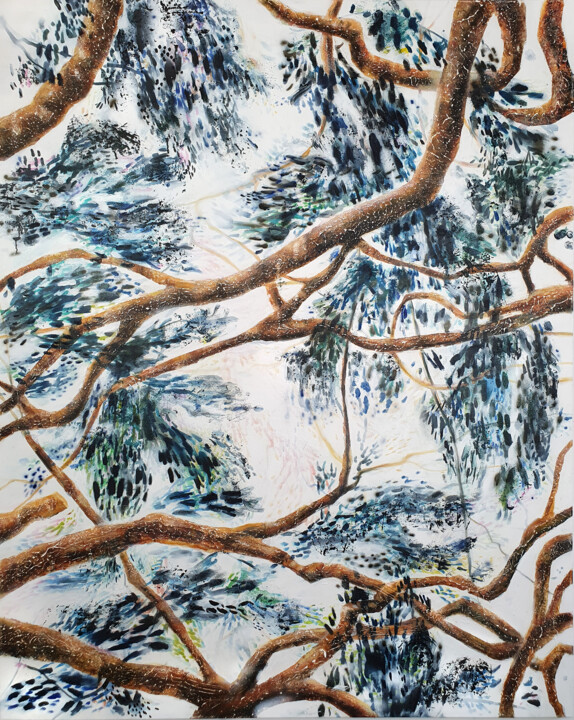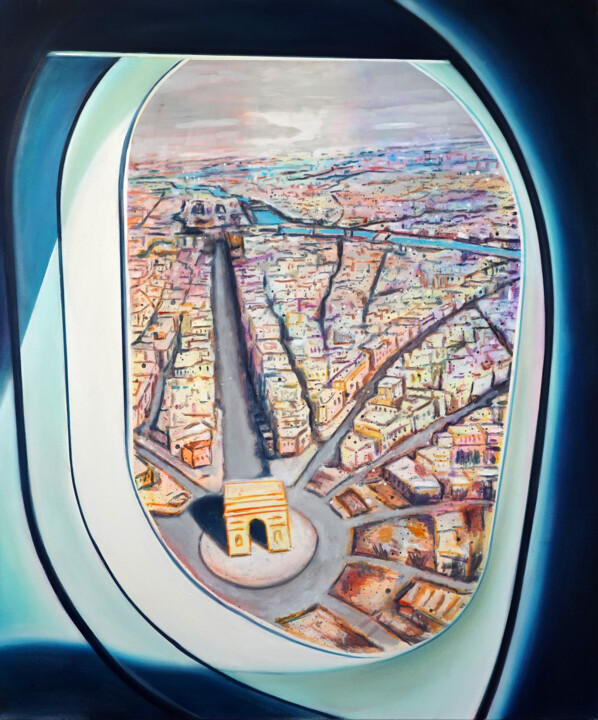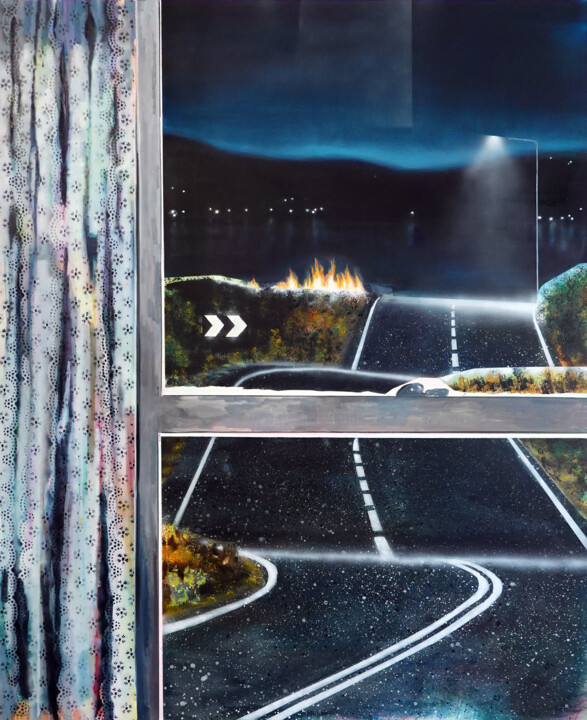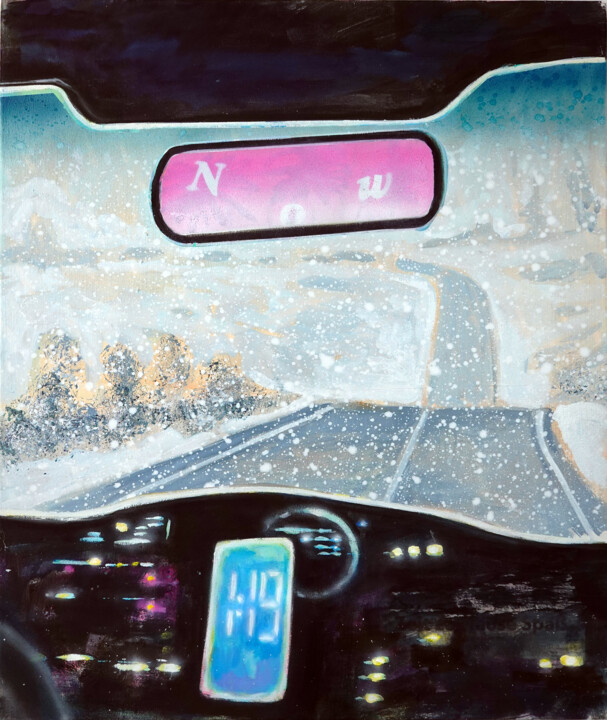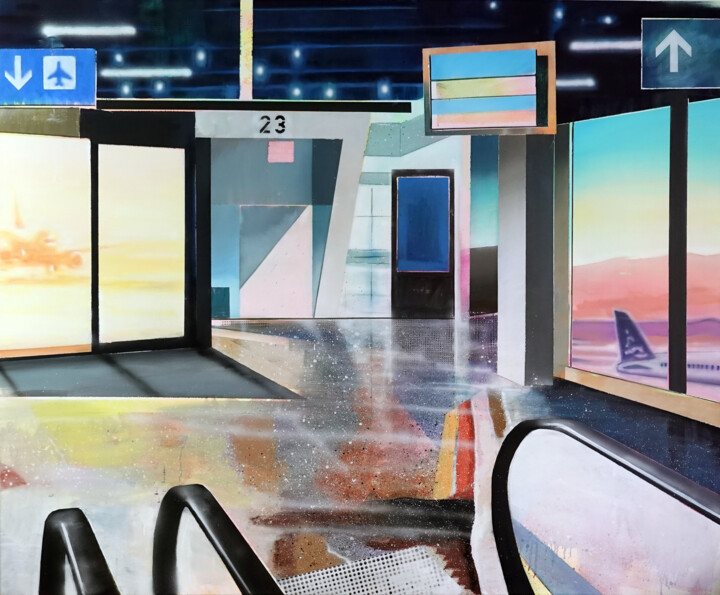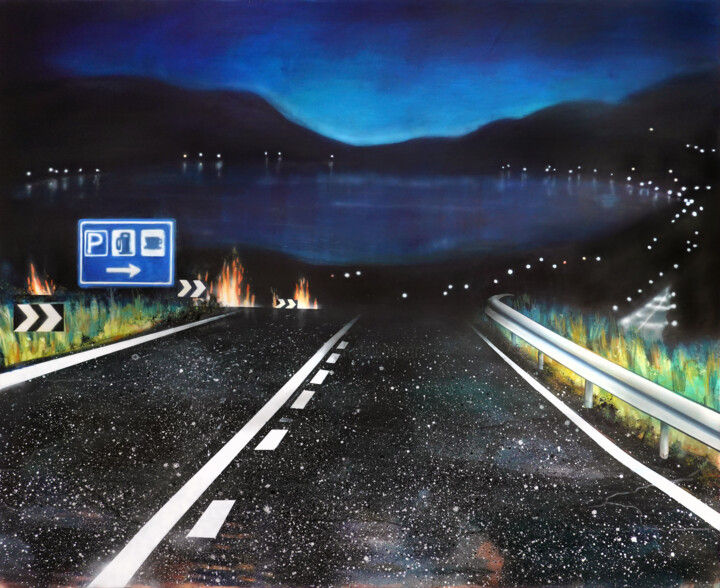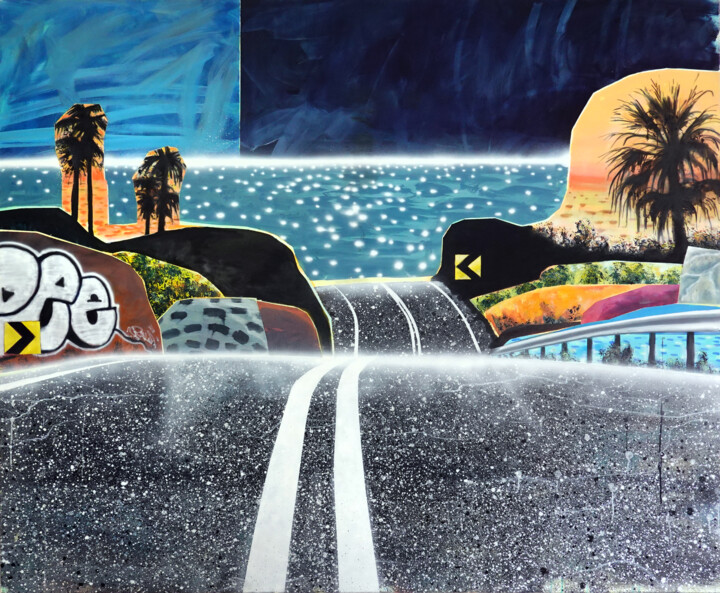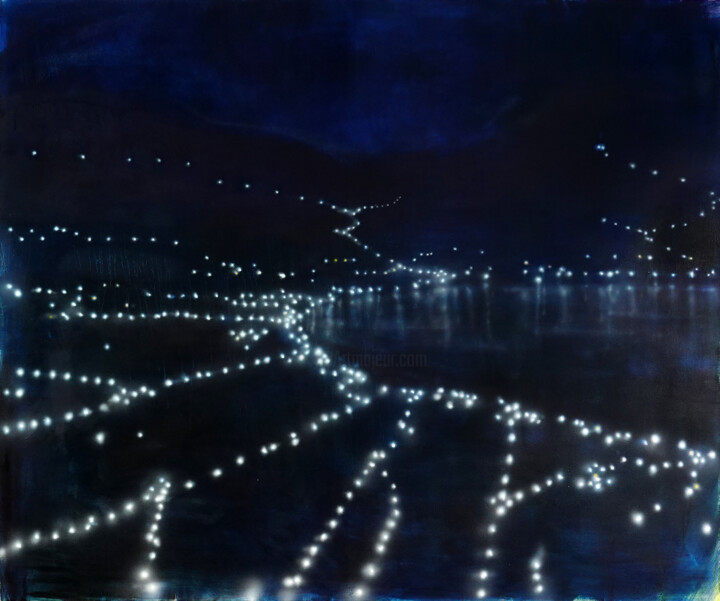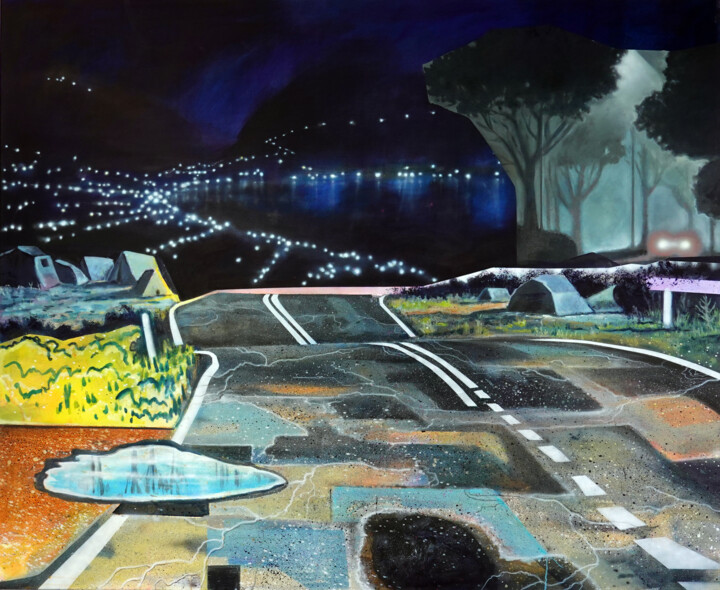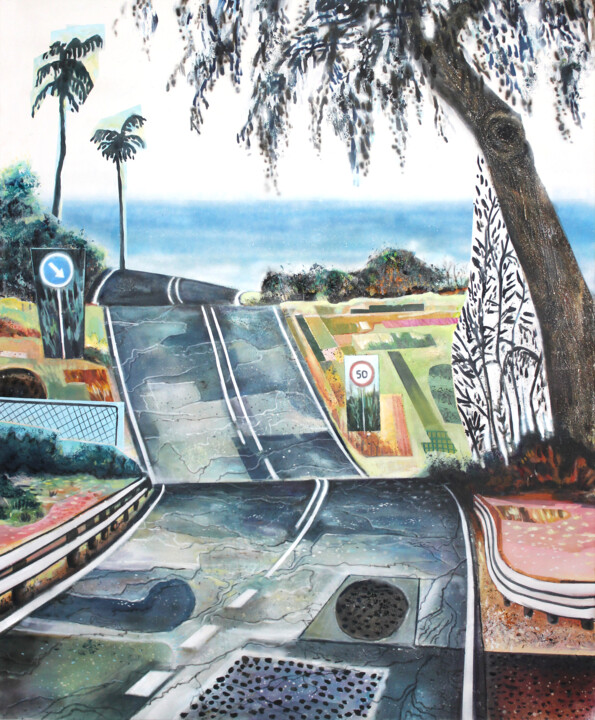What inspired you to create art and become an artist? (Events, feelings, experiences...)
I have always drawn and painted. It has always been mainly a preoccupation with myself and with my environment.
What is your artistic background, what techniques and themes have you experimented with so far?
I studied in London at the Chelsea College of Art and Design for 2 years. When I returned to Vienna, I was accepted at the University of Applied Arts, where I studied painting for 5 years. London had a great influence on me. The great cultural exchange taught me a lot. It gave the opportunity to see and learn a lot of new things.
What 3 aspects distinguish you from other artists and make your work unique?
It is no coincidence that the protagonists in my paintings are mostly physically absent, because I try to depict the environment they may have been in at the given moment. Their invisibility adds to the mystery and artistry of the scene, but removes the most recognizable aspect of figuration from works that ultimately convey something beyond representation or language.
Another important aspect in my work is the attempt to work with different styles. At first glance, the images appear figurative. But on closer inspection you can see that the individual parts are constructed. Some are painted realistically, others abstractly. Typographic and graphic elements often appear in my work.
Where does your inspiration come from?
Everything started with me when I saw in London in a museum store a book by the artist Richard Hamilton. It was the work "Interior IV".
The painting draws its fascination from the perspective construction of the composed interior. The organization of the space evokes a strange mood and gives the viewer the impression that the space is assembled from different points of view according to a cubist pattern.
So similarly I try to represent and build in my works; motifs from the Internet and magazines are snatched from their context with me. The newly depicted scenes are hints of a new story I want to tell.
What is your artistic approach? What visions, sensations or feelings do you want to evoke in the viewer?
It is very important to me that the images are not unambiguous. I tell my story, but the viewer should be able to have his own interpretation. Every person has a different story and interprets images in their own way.
In my work, I also try to address the question of how history is constructed and interpreted by trying to make paintings that are as intellectually challenging as possible as well as visually seductive.
Not only images, but also the juxtaposition of quotes and references from a broad and varied subject are reflected in a realization of "cut-and-paste" on canvas. Connections between art history, politics, music, literature, etc. and my personal experience and its motives, I try to combine and merge into a new reality.
In my new paintings I try to create a strong mixture of atmosphere and incident, solitude and omen. The new works depict situations as psychological events and describe travel, transit and places as if from an existential perspective. Sense of time and place in the works, resembles that of the modern traveler who is at once isolated and stateless, often dispassionate yet vulnerable. Randomness and stasis often set the mood. Color, form, and composition are tense, intentional, and describe, I hope, moments of opened consciousness.
What is the process of creating your works? Spontaneous or with a long preparation process (technical, inspiration from art classics or other)?
The technique that appeals to me the most is that of collage.
Almost all my works start with a collage, which are then translated on a canvas. Oil paintings are created, where all the individual parts are assembled into a whole.
Do you use a particular working technique? if so, can you explain it?
There are many different techniques. From glaze painting to stamping, sand, glueand much more, pretty much every technique is used.
Are there any innovative aspects to your work? Can you tell us which ones?
I try to show the continuing contemporary relevance of painting as a means of communication and how we experience the world we live in.
Collaging opens up endless possibilities for world creation and reflects the state of our everyday lives - figuratively speaking. Every day we are exposed to a flood of images. Digital communication is faster and easier than ever before. In a few words you could say the world has become small and moved closer together. Styles and trends from all over the world come together and mix aud the digital platforms. Thousands of parts make up a diverse whole, mixing with foreign cultures and styles.
The medium of collage makes it possible to embody new ways and forms of thinking and feeling. With the collage technique, one can create a decomposition of time and space and enter directly into a dimension of transformation and eternal change. Creating collages is a diverse, open, fast, spontaneous, anarchic and powerful tool with which to express oneself.
I try to reflect in my paintings the world we live in. We live in a "remix culture" so to speak. The DJ culture is the obvious one, which has also become acceptable for a long time. Today, "copy and paste" is virtually the modus operandi of our world. We take the pants design from the nineties and the blouse from the fifties, click our way from link to link on the net, quote, re-tweet, post, have thousands of tabs open and are on five social media platforms. In our perception, disparate elements come together to form a kaleidoscopic whole. A whole that is constantly changing as we travel through everyday life, the web and the media. A flood of information and images that constantly become more and more.
The collage technique is the perfect tool for an artist to push things through the walls of time. Yesterday, today and tomorrow can be mixed into a strange structure. I try to reflect this "world."
Do you have a format or medium that you feel most comfortable with...if so, why?
I have tried many techniques, but the one that has worked best is oil painting. Few other techniques are as varied and exciting.
Where do you produce your works? At home, in a shared workshop, or in your own workshop? And how do you organize your creative work in this space?
I have a studio in Vienna. In my studio I am alone and that is also the best way for me to work. I mostly listen to music and drink a coffee. Other people in the studio would distract me. I need the space and time all to myself. I need to be able to focus on the process, thoughts and feelings.
Does your work take you traveling to meet new collectors, for fairs or exhibitions? If so, what does it bring you?
Of course. With every exhibition I do, new acquaintances and friendships are made. Some collectors are very loyal and have been following my work for many years. It is always a pleasure to meet them and talk about the new works that have been created.
How do you envision your work and career as an artist developing in the future?
As long as it gives me pleasure and fun I will paint, of course. I don't put any pressure on myself. Art is not a job but a need. I have no great expectations here. As Martin Kippenberger once said, "It is painted what comes on the table!".
What is the theme, style or technique of your latest artistic production?
In the last works I deal with "roads". Everyone has their road in life. Some are uphill and some are downhill. Mostly it's up and down. The roads are also long, wide, rainy, broken, sunny or dark ...
Can you tell us about your most important trade show experience?
I have been to PARALLEL VIENNA a few times. There are many interesting and current positions on contemporary art here. It is always exciting to exhibit with other colleagues and also to work together. Here I also got to know new contacts and many other artists.
In the KÜNSTLERHAUS Museum Vienna, where I am one of the members, is also very exciting. There are many interesting and high-quality exhibitions here. The curators are very dedicated.
If you could have created a famous work of art history, which one would you choose? And why ?
"The Big Splash" by David Hockney. Why, I don't know exactly, but it speaks to me very much.
If you could invite a famous artist (dead or alive) to dinner, who would it be? How would you suggest he spend the evening?
I would love to have tea with Sir William Turner.

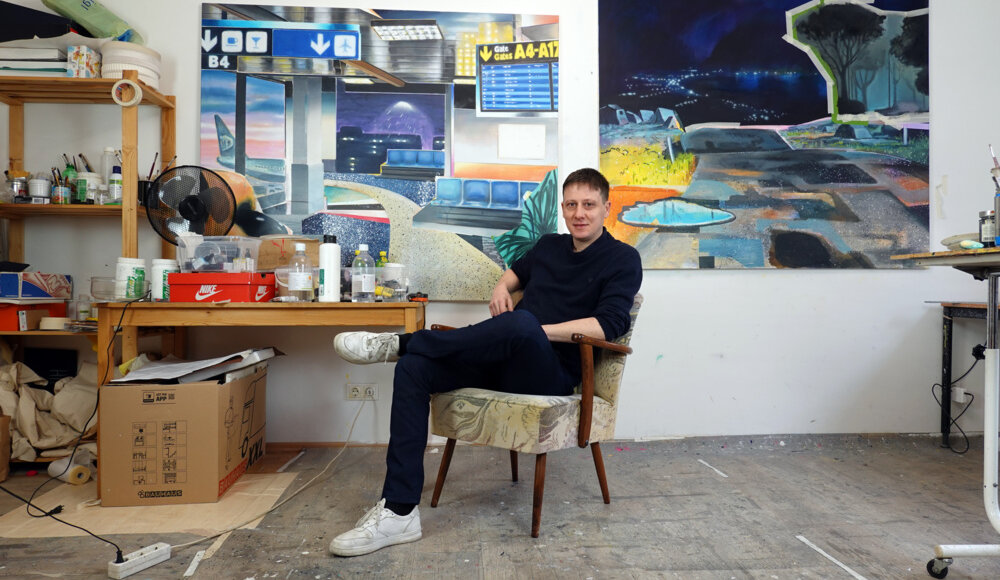


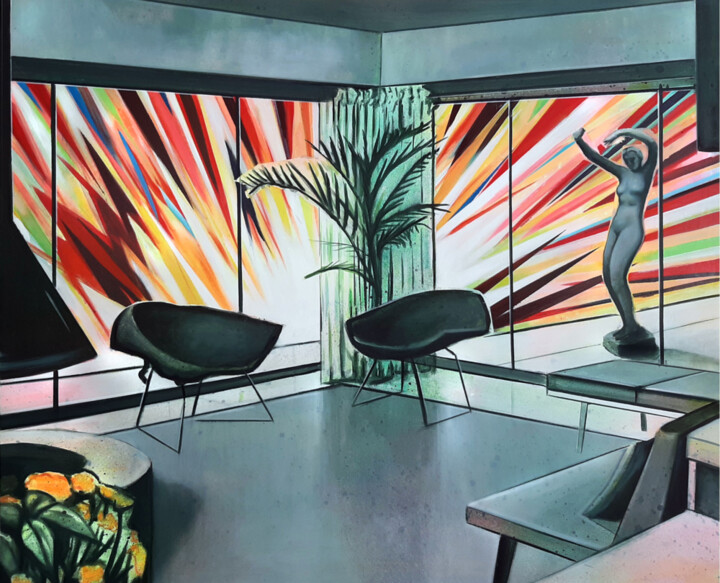


 Olimpia Gaia Martinelli
Olimpia Gaia Martinelli
